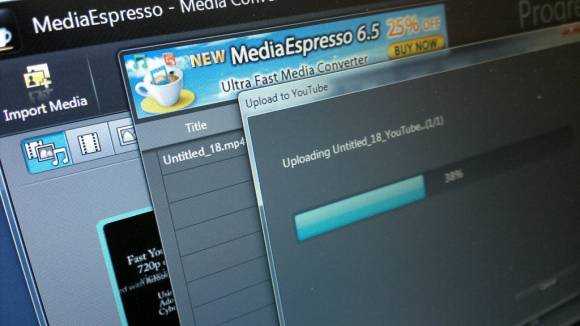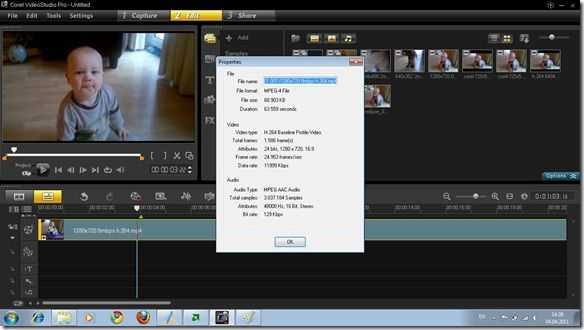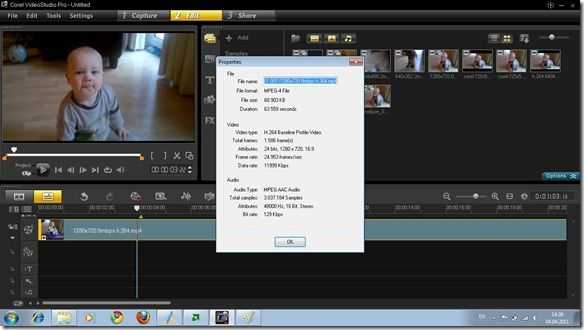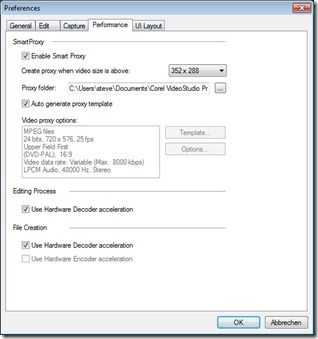I have a history of testing simple, fast and efficient video editing software and two years ago I settled on an Intel platform with Quick Sync hardware. Quick Sync is simply a hardware acceleration layer for video encoding and processing and it works extremely well on Ultrabooks. It also works on Clovertrail and Baytrail-T Windows 8 tablets and 2-in-1s (also a few Baytrail-M processors) but the problem there is that the desktop applications are just a bit too heavyweight. I’ve tested a number of Windows 8 ‘RT’ apps but it wasn’t until last week that a re-tested Magix Movie Exit Touch and found a big step forward. Version 2 is fast, touch-friendly and works perfectly for YouTube video sequencing up to 1080p.
Tag Archive | "ultra mobile video editing"
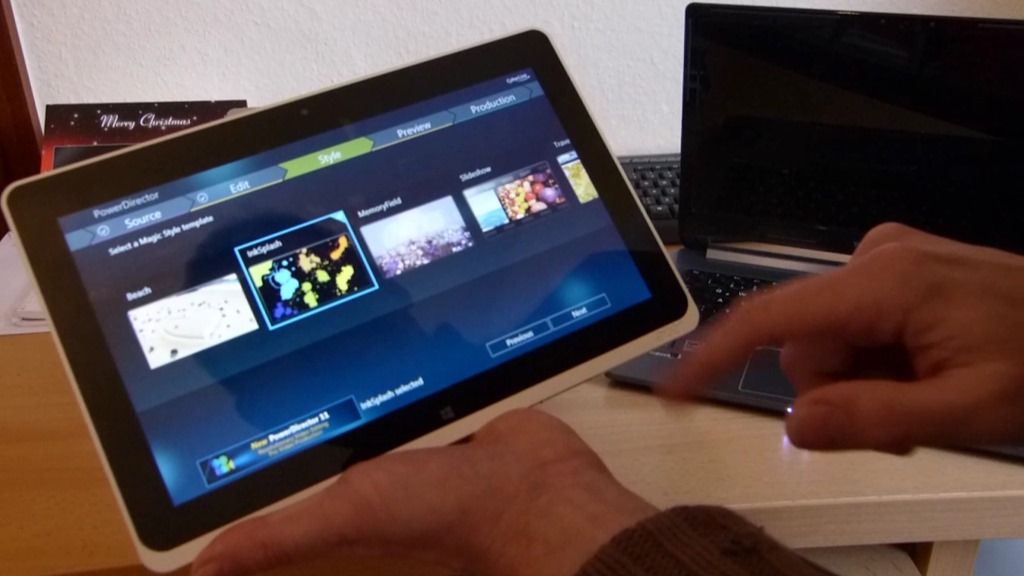
Very Smart Camera! Acer W510 and PowerDirector 11 Mobile Video Demo
Posted on 19 December 2012
 Here’s a very interesting scenario and demo.
Here’s a very interesting scenario and demo.
I installed PowerDirector 11 Mobile on the Acer W510, a CloverTrail Tablet and used the built-in cam for a complete end-to-end on-device video creation and sharing process.
After I had taken the 1 minute video it took just 5 minutes, 300 seconds, to create and render a video with transitions, to upload to YouTube and even included the time it took YouTube to make the video available. Smart camera, or what?
Read the full story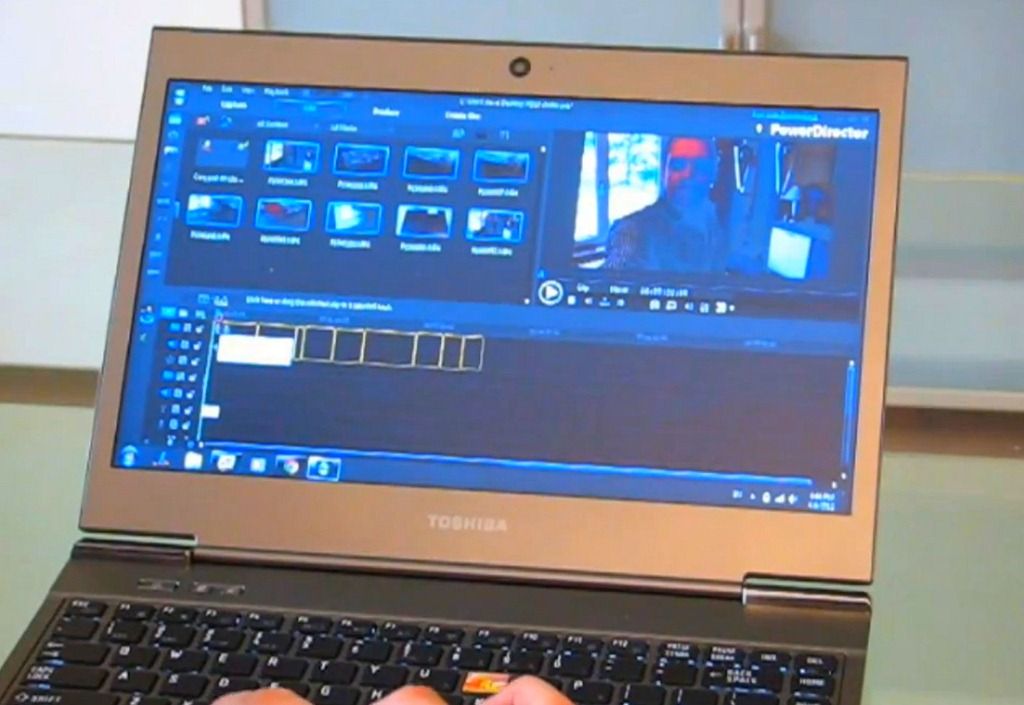
Ultra Mobile Video Editing with an Ultrabook
Posted on 07 April 2012
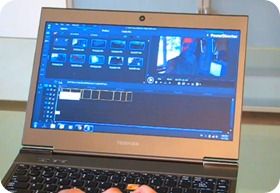 Last year I ran a series of articles about mobile video editing. I covered smartphone, netbook and ultrathin solutions before settling on a low-cost , low weight set-up.. The Samsung NP350 worked well with its 2.2Ghz Core i3 but by moving up a notch in performance and efficiency, lowering the weight and, yes, increasing the cost by well over 100%, I’ve found a solution that’s quite stunning. I’m not just talking about looks!
Last year I ran a series of articles about mobile video editing. I covered smartphone, netbook and ultrathin solutions before settling on a low-cost , low weight set-up.. The Samsung NP350 worked well with its 2.2Ghz Core i3 but by moving up a notch in performance and efficiency, lowering the weight and, yes, increasing the cost by well over 100%, I’ve found a solution that’s quite stunning. I’m not just talking about looks!
The Toshiba Z830 Ultrabook weighs less than most netbooks but packs a 1.7Ghz Core i5 that can Turbo boost to 2.7Ghz. It’s got 6Gb of RAM and a great 128GB SSD that, although it isn’t the fastest at sequential speeds, knocks the socks of a hard drive solution and works perfectly with Cyberlink PowerDirector 10. The difference between the NP350 and Z830 solutions is huge!
I demonstrated the solution at VideoCamp Germany in Düsseldorf a few weeks ago and learnt a few things too so after a few days thought, I put together a tutorial article and behind the scenes video that shows exactly how I get those product launch videos up in record time. 10 minutes from camera-on to YouTube-ready!
The article is over at Ultrabooknews.com and it shows the hardware, software, method and results.
Are you doing mobile, quick-shot video work? A video journalist perhaps? Let us know your process and hardware in the comments below.

Ultra Mobile Reporting Kit CES 2012 – V11
Posted on 04 January 2012
CES is just days away and I’ve just finalised the kit-list for my Ultra Mobile Reporting Kit V11. I’ll be there for the week and focusing on Tablets, Netbooks, Ultrabooks and, if I find anything, UMPCs.
2011 was a year of change in the way I did reporting for my websites Carrypad, UMPCPortal and Ultrabooknews. The Samsung Galaxy Tab gave me more mobility than I had ever had and the Nokia N8 gave me less reason to use a dedicated camera for photos and videos. My last test relied on just those two items for everything.
Towards the middle of 2011 the realisation that YouTube was one of my most important revenue channels led me towards a better quality 720p editing set-up. A series of tests and articles posted here on UMPCPortal gave me an indication that Core i5 Sandy Bridge processors could bring some major advantages for 720p video work. Intel Quick-Sync video hardware and some excellent software from Cyberlink in Media Espresso and PowerDirector sent me on the search for a new camera and in October I settled on the Panasonic Lumix FZ150, a bridge camera that gives impressive low-light camera and HD video results along with relatively lightweight hardware for a camera with a long-zoom lens and a rotating display. After testing some Ultrabooks I actually took the Samsung NP350, a 1.4KG 12.5 inch laptop that runs a 2.2Ghz Core i3 and holds a 60Wh battery. Compared to my previous netbook (Gigabyte Touchnote) it’s the same weight but a gigantic step forward in processing power. Even battery life is better so I’m happy that it will work well when on the road.
Here’s the detail on the kit-list:
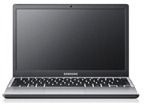 Samsung NP350 Notebook
Samsung NP350 Notebook
A 1.4KG (3lb) notebook running a Core i3 CPU at 800Mhz-2.2Ghz with battery life ranging from over 8hrs (typing) to 1hr (gaming.) It has a 12.5 inch 1366×768 matt screen, 600GB hard drive, good keyboard, Intel Centrino Wifi module with Wi-Di, SSD, fast-start, HDMI, VGA, full-size SDHC and 2 USB2.0 ports with sleep ‘n charge. There’s no backlit keyboard, SSD or USB3.0. Cost – €430 before taxes.
I’ll use the NP350 for 720p video conversion and editing and sit-down article composition, data storage, mass photo upload.
 Panasonic Lumix FZ150 Camera
Panasonic Lumix FZ150 Camera
12MP, 24x Zoom, hot-shoe, rotating display, full HD (plus 720p) in MPEG4 or AVCHD, external mic port, HDMI-out and some impressive low-light performance for a compact-size sensor. Weight is just over 500gm. Price around €500
The FZ150 will be used as a 720p video device and camera. I won’t be using 1080p quality as it’s overkill for the quick hands-on videos I post to YouTube, especially as YouTube compresses the hell out of 1080p!
 Nokia N8 CameraPhone
Nokia N8 CameraPhone
A Symbian-based phone with high quality camera, Xenon flash and 720 video capability. Long battery life.
The N8 will be used as phone, SMS, calendar reminder and for quick photos (including evening/people/party) that I’ll put up on Twitter, Facebook and other channels. It will remain on my European SIM card with no data capability while at CES. Images will be transferred to the Galaxy Tab via Bluetooth for sending to various social channels when needed.
 Samsung Galaxy Tab Android Tablet
Samsung Galaxy Tab Android Tablet
At over one year old, you’d think that there are many better 7 inch tablet solutions out there by now but the Galaxy Tab 7 is still up there as one of the most usable 7 inch tablets on the market. I’m looking to upgrade when ICS is available but the original Galaxy Tab 7 will be fine for CES work. There won’t be a SIM card in it for data or voice but it will be connected to my Clear MiFi unit as my ‘always-on, always connected’ component. I suspect i’ll have some mini blogs going out through this as well as Tweets, Facebook posts and Google Plus posts.
Clear MiFi + Power Pack
Not shown on the picture are a Clear 4G MiFi unit (rented from Event Radio) and a small USB power-pack that I hope will sit in my bag and provide me with a moving cloud.
The kit weight is going to be well over 2KG once the tripod, cables and spares are added and it’s more than I would like to be carrying but for a 720p recording and editing suite and always-connected mobile and social set-up, it’s not far from optimal.
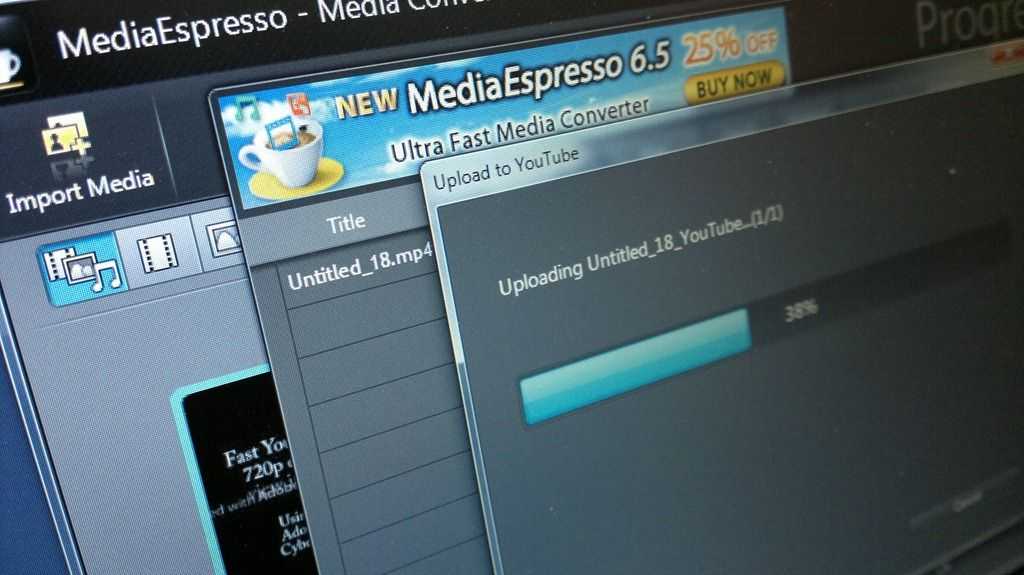
Ultra Mobile Video Editing Part 5 – Series 9, Core i5 and Software Tests
Posted on 08 July 2011
In Part 4 we looked at a €399 AMD Fusion-based Lenovo S205. Through a number of video editing software tests I managed to get an acceptable 720p rendering speed out of the device which would be OK for short projects. For 480p output, it was good though. In this article I’m taking it up a notch in processing power to an Intel ‘Sandy Bridge’ based 13 inch laptop. It’s the lightweight Samsung 900X3A and given the right software, it’s proving to be a fantastic machine for 720p editing, rendering and uploading for YouTube.
Before we start though, a reminder of the aim and parameters set for the project. The parameters I’ve set for the project are shown below and you can read about why these parameters have been set here.
- PC and video editing software to cost less than 600 Euros
- PC to be less than 1.5KG with 12 inch screen or less.
- Total camera + PC solution to weigh less than 2KG and cost less than 1000 Euro
- Source video should be 720p
- Video sent to YouTube should be 480p minimum
- Video editing sotware must include watermarking, overlays, crossfades, and multiple audio tracks.
At 1.33KG the Samsung Series 9 (900X3A) is light but with the 13 inch screen, is bigger than I’d like to see. The screen size (1366×768) does have some advantages at this size though. It’s matt and bright too which means it is good for working outdoors. A 128GB fast SSD helps too. There is an 11 inch version of the 900X3A available to order if the 13 inch screen is not to your tastes. If it looks and sounds like an expensive laptop, it is. It’s well outside the target price of 600 Euro. You won’t be able to find the 900X3A for much less than 1400 Euro at the moment but don’t let that put you off because this is a premium device that’s one of the first in the market. Intel are promising sub $1000 devices based on the same platform as the 1.4Ghz Core i5 in the Samsung 900X3A and as time goes on, those prices will drop further and during 2012 I expect devices of this calibre to be coming down fast to 600 Euro.
You’ll find a full review of the Samsung 900X3A over at Ultrabooknews but let’s focus on video production here.
First thing to note is the lack of full-size SD card slot. It’s a big minus in my opinion. A micro-SD card slot is available but I really don’t recommend swapping micro-SD cards about. The full-size adaptor with eventually fail and there’s a high risk of dropping or losing a micro-SD card. The solution is to use a USB adaptor for the SD card or a standard USB connection. High-speed cards are a must for high bitrate videos so make sure your adaptor is a quality one. The Series 9 supports USB3.0 but you shouldn’t need that. One of the ports can be used as a charging port when the device is off too which could be handy.
The excellent SSD in the Series 9 works at up to 220MB/s so for large programs like Power Director 9, there’s no hanging around waiting for it to load up. YOu might find it load faster than on most desktops in fact. Moving files around, duplicating and general file work is quick too which really helps to smooth things along.
The CPU/GPU combination in the Series 9 is known as ‘Sandy Bridge.’ It’s the second-generation Core processor from Intel and makes significant processing power gains over the previous generation. It’s an expensive platform but as well as raw CPU power and acceptable low-end gaming GPU power it also includes a hardware video decoder and hardware video encoder for some formats. Support for the video encoder is not widespread though. HDMI-enables full extended screen working but remember that the audio is routed digitally and you’ll need an audio decoder in your monitor.
As with the Lenovo S205, I’m using 12Mbps 25fps 720p from a Nokia N8 and converting it to 720p at 30fps with a bitrate of 6mbps. The laptop is set to high-power mode (no mains power.) Remember, this isn’t a comparison of video editing suites, it’s a test to see how much editing and rendering power and time can be had from the Samsung 900X3A (and by definition, from other notebooks based on the same CPU/GPU/Chipset combination.
Video Editing Software
Cyberlink Media Espresso.
Cyberlink Media Espresso does a fantastic job of converting video. A 7 min H.264 video was converted in just over 60 seconds which is exceptional. It matches the frame rate automatically though and despite setting a 6mbps bitrate, the conversion completed with a 4mbps bitrate. It bodes well for video rendering using Power Director, the video editing tool from the same company. Note that this is a pure video conversion tool and no clip editing or sequencing is possible.
One feature in Media Espresso which could be a real advantage for mobile video creators is the YouTube upload feature. I was able to throw in a 6mbps 720p file for upload which was converted down to 1.8mbps to match YouTube minimum requirements. It results in fast upload speeds and fast conversion speeds at YouTube. A 180MB 1080p file was converted down to low-bitrate 720p and just 33MB in size. Upload speed was obviously 5x faster than the original and the conversion time at YouTube was about 2 mins for 360p and another minute for 720p. Ignoring the video editing tools for a bit, this is one tool that could seriously help beat the clock on uploading YouTube videos. When you’ve got time you can always upload the high-bitrate version at a later time.
Cyberlink Power Director
Over the last 5 years I’ve seen consistent support from Cyberlink for low-level hardware. Early VIA UMPCs had video decoding hardware that was supported by Cyberlink. The recent AMD Fusion platform is well supported and the same is true here with the Intel Quick Sync Video technology.
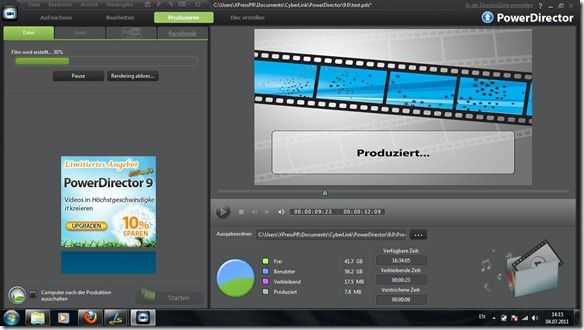
Despite trying a wide range of settings though, I couldn’t get Power Director to work as fast during standard video clip conversion as Media Espresso. Using a single clip without any affects I was able to achieve a 6:48 conversion time for the original 7:38 clip which is good, about 3 times faster than the Lenovo S205 with the same challenge, but there seems to be a more complex operation going on in Power Director that results slower conversion speeds than with Media Espresso. Using the default hardware acceleration settings (hardware decode only) I only saw a 30% average CPU load. Turning off the hardware decoding though does result in higher CPU load and slower processing (about 2x.) It wasn’t until I spotted the ‘Trial Software’ watermark on the rendered video clip that I realised what might be happening. The Intel Quick Sync encoder can’t work efficiently if there’s an overlay being applied. I’m checking this theory with Cyberlink right now and will update the post when I get new information or am able to test without the text overlay being forced.
Update: Thanks to Cyberlink I was able to test a fully licensed version of Power DIrector. I couldn’t get any more speed or CPU load out of the system so clearly there’s something else that may need optimising. 720p conversion rates remained at just under the 1X real-time mark about 3x faster than the AMD E-350 based Lenovo S205 and easily 5x faster than a standard Intel Atom netbook.
At this stage we can say that Intel Quick Sync does work in Power Director and this test case, a 720p 12mbps source, gives a 2x increase in rendering speed (with watermarking) but there could be more. Using other clips, 1920×800 at 8mbps for example, I began to see some limits where the hardware encoder wasn’t helping to increase the speed (but was helping to keep CPU usage low and therefore battery drain minimised)
In the best cases (using Intel Quick Sync video) I saw an average of about 18W being used with a peak of 25W, possibly while the Sandy Bridge Turbo feature was being used (until the thermal controls turned it off.) In terms of speed per watt energy consumed, that’s easily the best I’ve seen so far. On a fully loaded battery, the Samsung Series 9 900X3A could encode about 2.5 hours of 720p timeline cuts, fades, titles and sequencing. On the Lenovo S205, you’ll get about 1hr of encoding completed. On a netbook, well, you don’t want to go there with 720p editing and encoding!
Heat and Turbo
Intel’s Turbo Boost technology is interesting and useful in some situations. In video rendering situations though it’s not so useful due to the way it works. Thermal monitoring means that if the CPU core reaches a fixed temperature, the Turbo boost feature will be restricted. In CPU-bound, multicore tasks like video rendering, both cores will reach operating temperature very quickly and Turbo will be turned off. In some cases I saw just 9 seconds of Turbo boost but it depends on ambient temperature and the process being used. For video editing (not final rendering) Turbo boost works well because it’s only need occasionally. It has major advantages but not in video rendering.
SVRT
SVRT is a feature in Power Director that detects if the source and destination file formats, frame rates and bitrates are the same. In they are the same (or similar in some cases) the source file is not re-rendered completely. Only fades, titles and effects will be re-rendered.. In other cases, the file is ‘passed through’ to the output thus vastly increasing rendering speeds. With the N8 source files I was unable to achieve this. Interestingly, by passing the source files through Media Espresso it converted them to a format that was compatible with the SVRT process.
This pre-conversion process may not be the highest-quality way to treat video clips but for our YouTube target, it’s an interesting process and could, for videos over say 5 minutes, could shorten the rendering time. There’s a second advantage to having Media Espresso in the toolchain too because it does a very good job of converting and uploading files for YouTube. There’s also the option of using some simple clean-up tools although that will extend the rendering time by a lot.
Other tools
Again, this article is not meant as a review of video editing software but during the series I’ve mainly been focusing on two software packages. The Cyberlink solutions covered above and the Corel Video Studio Pro X4 solution that I’ll talk about now. The reason? They both offer sub €100 solutions, include support for hardware and specialist libraries like OpenCL and they include enough capability for the average mobile video process. These aren’t pro tools but where speed is important and YouTube is the audience, pro tools are often too much.
Using Corel Video Studio Pro X4 I wasn’t able to get quite the speed of rendering that I saw on Power Director and there was no indication that Intel Quick Sync Video was supported although the ‘hardware encode’ option did appear. I wonder if the Intel Quick Sync technology is actually used. After 20 or 30 different tests I was not satisfied with the speed and efficiency of Video Studio Pro X4 and abandoned this a a choice for the Sandy Bridge platform.
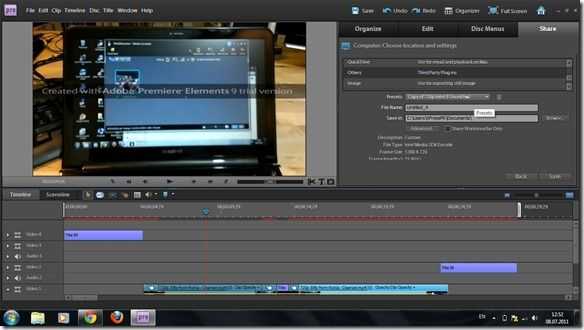
Adobe Premier Elements is another popular mid-range editing suite and it does support Intel Quick Sync technology via an Intel plugin (available here.) In my tests I felt confident that more was being pulled out of the Series 9 that with the other two programs although power usage was higher by about 10% than on Cyberlink Power Director 9. Because of the plugin there are specific settings for using the Intel Quick Sync technology and it’s possible to force the use of the hardware. In an initial test though, the video failed to finish its conversion. In all cases video direct from the N8 was misinterpreted as 500fps video and could not be used until I passed the source video through Media Espresso, process that takes time and obviously will degrade the source material.
By using these ‘cleaned’ files and creating a 1 minute timeline of fades, titles and including a ‘demo software’ the process was completed in nearly 2X real time 37 seconds for a 60 second video. I had no problem in editing or rendering these pre-converted files.
In a test of a standard bridge camera 720p file I downloaded a sample from a Canon SX30is in 720p at 21mbps. The file was easy to work with in Adobe Premier Elements and rendering speed down to 6mbps with fades and edits was almost as fast as with the ‘converted 6mbps file from the N8. Conversion down to sub-2mbps for YouTube and subsequent upload and availability was
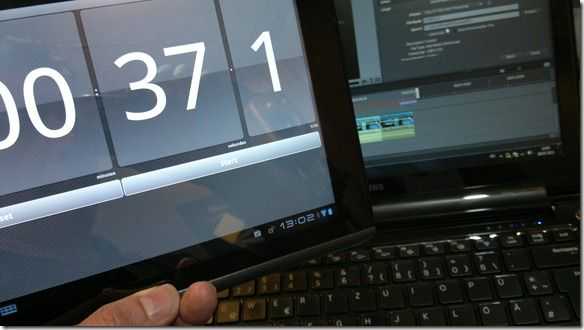
The software is very flexible in creating output formats although the user interface didn’t seem as intuitive to me as Power Director. Given that Intel Quick Sync support will be important for the professional version of Adobe Premier, it’s very likely that the Intel Quick Sync technology will get continued support and end up as a core part of the software. At this stage though, it might not be prudent to rely on this two-part solution for professional use.
For the purposes of this article though, it proves the potential power of the 2nd-generation Core i5 platform.
Summary
Both Adobe Premier Elements and Cyberlink Power Director confirm that a 1.3KG laptop can be used for comfortable and efficient 720p video editing and rendering. The hardware encoding and decoding in the 1.4Ghz Core i5 platform is clearly helping and in comparison with the Lenovo S205 that I previously tested, you can get a lot more done within the duration of a single battery charge. That’s very important for mobile users. Given our requirements, the Samsung 900X3A is a little expensive and with only 100GB of disk free, there are some storage limits that will have to be offset with a USB3 hard drive but as a platform, Sandy Bridge (at a measly 1.4Ghz) proves it can offer 720p editing and rendering in 1.3KG. Of the video editing suites tested, Power Director and Adobe Premier Elements come out on top for performance with Adobe Premier Elements leading the way assuming source files work correctly with the system. Cyberlink Media Espresso works amazingly fast to convert files down to usable sizes for even faster editing and rendering and also, fast upload times.
In the video below I give you a demo of edit, render, convert, upload and view on YouTube. It’s a 720p 22mbps file from a Canon SX30IS (This sample was used) and the whole process takes 8 minutes.
Note on stability
In tests with Adobe Premier Elements, I saw a number of program crashes. This is of major concern as project work was lost as a result. I didn’t experience crashes on the other editing packages.
Note on Quality
The quality parameters for this project are fairly loose. I’m not looking for the best quality codec but I’m looking for an acceptable 720p full-screen experience on YouTube. At 2mbps, 720p videos are going to be lacking in a lot of finer detail but for YouTube, that’s the way it is. Editing in higher bitrates and converting using Media Espresso for a final YouTube upload leaves the original available for use later if required.
Next Step
For me, this ends my work to analyse low-end solutions because I know that in Sandy Bridge-based Ultrabooks I’ve found my solution. The next stage is to buy a device, make a final decision on the software and get to work creating content. Right now the Asus UX21 and Cyberlink Media Espresso and Power Director 9 are at the top of the list due to ease and smoothness of use and acceptable rendering speeds.
Thanks to Samsung Germany and Cyberlink for their help with this article. (Loan hardware and software provided.)
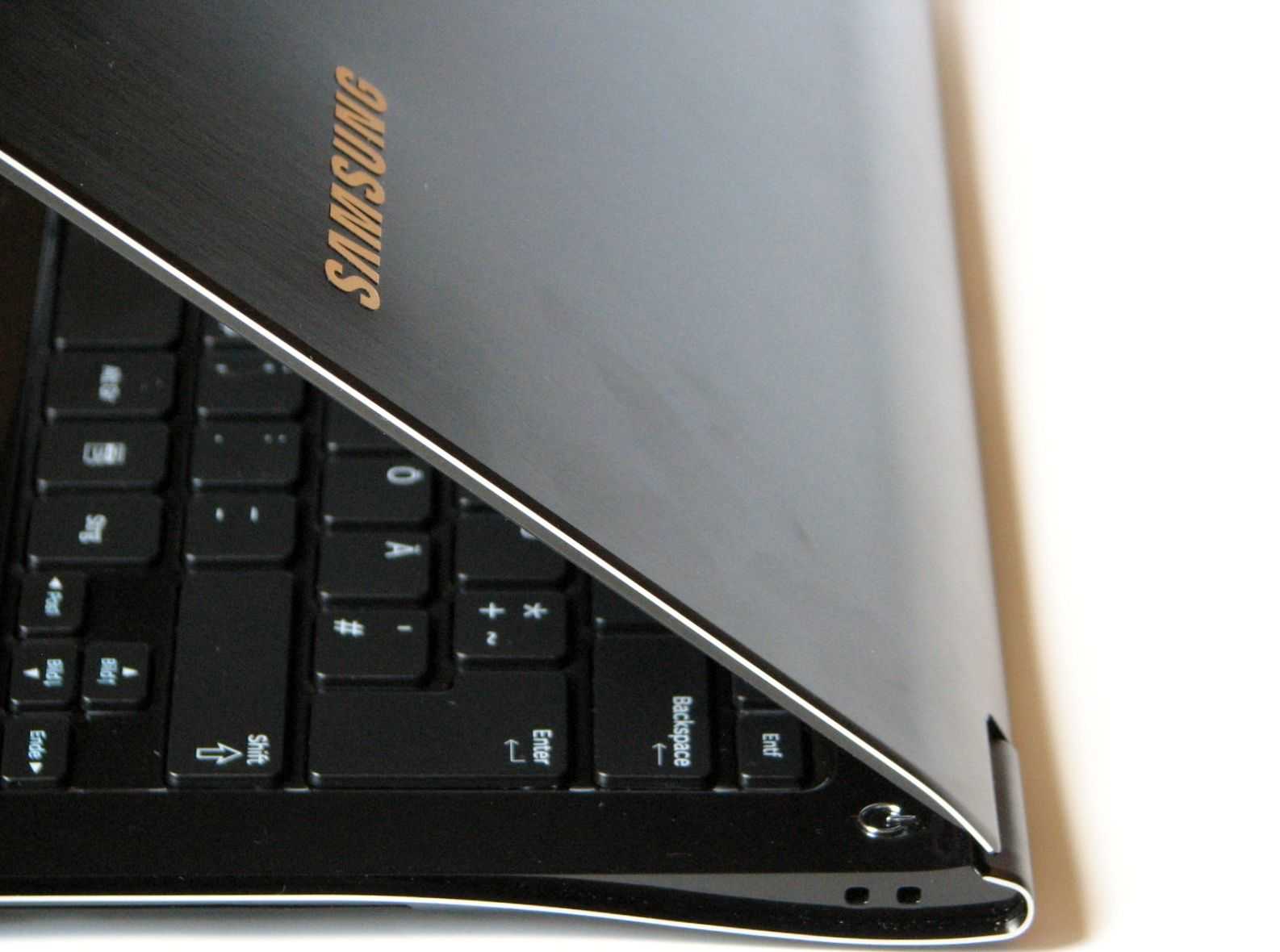
HDR-Computing on the Slick Samsung 900X3A
Posted on 22 June 2011
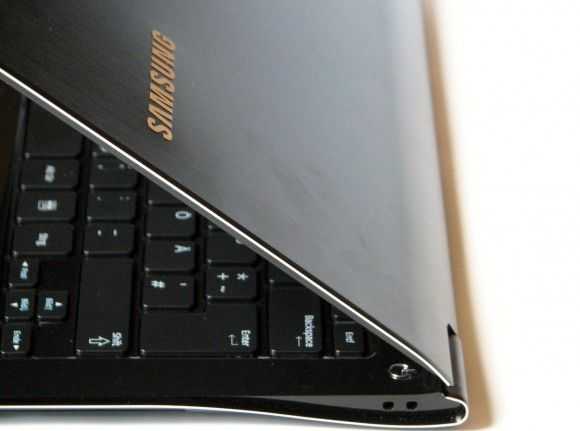
Thanks to Samsung Germany I am now using a rather swish and expensive Series 9 (Model 900X3A) 13″ laptop running the new Sandy Bridge ULV platform. This isn’t a ultra mobile PC of-course but it’s not here for ultra-mobile testing, it’s here for two other things. Firstly I want to use it for the next part of my Ultra Mobile Video Editing series and you’ll see that happen here are UMPCPortal. Secondly I want to start tracking the Ultrabook category very closely as I believe it is not only an important low-power platform for laptops but could, in a few generations, drive sub 1KG Windows devices that will range from sub 1W always-on, to 15W power-houses, exactly what I call High Dynamic Range Computing. They will challenge netbooks for size and power utilisation and include premium features like Wireless-Display, Light-Peek and security subsystems that can be used to stream and store high-value content. There will be a price premium of course but that should reduce to hit the top-end of the netbook range meaning Atom has a positioning job to do. You can follow my work with Ultrabooks over at Ultrabooknews.com
Read the full story
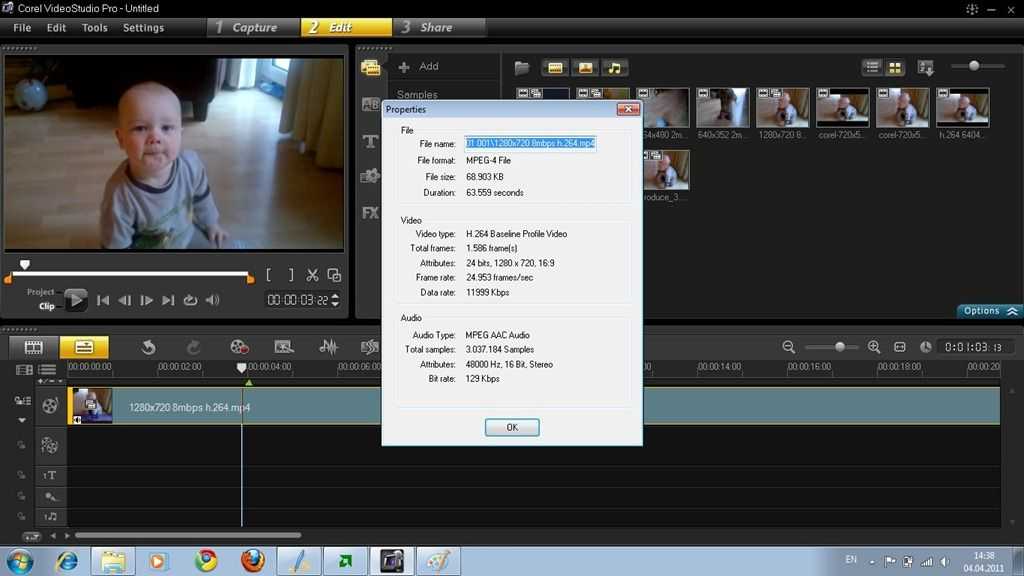
Ultra Mobile Video Editing Part 4 – Lenovo S205 / AMD Brazos Video Editing Test
Posted on 12 April 2011
You may recall that I lost a number of days work last week. Test results, screen caps and a whole bunch of text went out the window when I did a factory re-install on the device I was both testing and writing the article on. That will teach me!
The article was Part 4 of the Ultra Mobile Video Editing series and was a detailed look at two Brazos-optimised video editing applications on the Lenovo S205 AMD E-350 device. The results were, in general, quite impressive with both Cyberlink Power Director 9 and Corel VideStudio X4 showing use of the platforms features. In some cases, hardware video decoding and effects rendering was significantly speeded up through use of AMD Brazos features. In some cases, the results weren’t so good. It all depended on the type of output file.
After I lost my work on the reivew I wrote an overview of AMD APP enhancements amd i’ve just updated that with input from AMD and Cyberlink. The key thing to know with the C and E-Series APUs is this AMDs video encoding acceleration subsystem (which used to be called Avivo) which is used by many of the AMD enhanced video editors and converters, is not implemented on the E-350 (or its drivers.) It’s likely to be because it’s actually slower than the CPU but the end result is that there are limits to the enhancements that can be made.You can’t expect General Purpose GPU (GP-GPU) enhancements.
The diagram above shows the Cyberlink PowerDirector Brazos acceleration process. Note that the encode stage is 100% CPU bound. Actually this Cyberlink diagram is slightly wrong because there are some encode enhancements implemented in specific effects code that has been written to use Open CL/APP by Cyberlink.
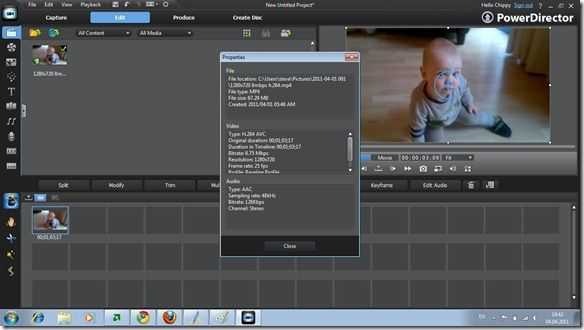
Corel Video Studio X4 (above) and Cyberlink PowerDirector 9 (bottom) video editing panes.
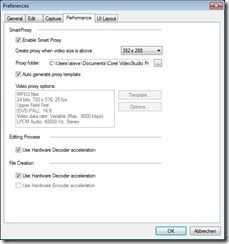
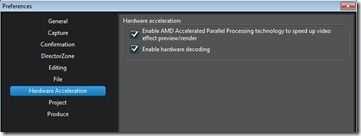
Click to enlarge. These are the hardware acceleration features in Video Studio (left) and PowerDirector.
Ultra Mobile Video Editing Test Results.
The parameters I’ve set for the project are shown below and you can read about why these parameters have been set here.
- PC and software to cost less than 600 Euros
- PC to be less than 1.5KG with 12 inch screen or less.
- Total camera + PC solution to weigh less than 2KG and cost less than 1000 Euro
- Source video should be 720p
- Video sent to YouTube should be 480p minimum
- Editing solution must include watermarking, overlays, crossfades, and multiple audio tracks.
Testing results. (Summarised from paper notes taken during testing.)
Source file: H.264 720p 8mbps 25fps. Output file H.264 720p 5mbps. All possible acceleration turned on. System power settings set to ‘always on’ (full power.)
1 Corel VideoStudio X4 managed to do this test in 3.7x real time which, for such a heavy processing job, is impressive. PowerDirector 9 took significantly longer.
2 In this test, the video decoding accelerations and memory transfer accelerations implemented tend to have little effect as the processing is very CPU intensive. Hardware video decoding and memory optimisations start to have a more significant effect where output files are smaller and use a less complex codec. 720p H.264 input and MPEG-2 DVD file output is a good example. Resutls were the same with and without accelerations enabled. Using the AMD System Monitor (V0.91) very little GPU activity was seen.
3 Using Corel VideoStudio, the E-350 CPU was 1.5x faster than the C-50 and 2X faster than an N450 CPU on this specific video encoding test.
4 For this project (480p minimum output size requirement) there wasn’t an output profile on either software suite that supported the required 852×480 output resolution. 852×480 is a favorable resolution for enabling HQ/480p experience on YouTube.
5 By adding DivX Pro to the Lenovo S205 I was able to create the required output in an AVI container. I was not successful in getting MP3 audio into the container but I’m confident this is possible. Divx Pro is a 19 Euro license. Divx Pro is a similar implementation of MPEG4 to H.264 (MPEG 4 Part 10) The rendering speed was approx 2.2X real time. This was the best result I achieved in all the tests I did and one that proves the AMD E-350 is capable of producing fast results for my specific video editing and upload requirements. Based on this test it appears that Divx Pro is more tunable (for both resolutions and encoding speed) than the H.264 codecs used in these editing suites.
6 I was able to output a 720×576 file with 16:9 aspect ratio (correct when re=sized to 852×480) using Power Director 9. The rendering speed was an impressive 1.8x real time. This option as sub-optimal as some resolution is lost when the rendered file is squashed into a 720-wide frame.
Other notes:
- The YouTube processes on both Cyberlink PowerDirector 9 and Corel Videostudio X4 don’t support an HQ profile. On Cyberlink, the profiles outpur WMV files which took much longer then H.264 files to output. (Aprox 5.5x real time)
- VideoStudio took a very long time to start from fresh boot. Over 60 seconds. PowerDirector 9 is about 25 seconds to start up in the same scenario.
- Both video editing suites were fluid in their editing processes.
- Power Director has some effects that are implemented in OpenCL for a significant acceleration advantage.
NotebookItalia also did tests (translation) with Corel VideoStudio and got similar results with Corel VideoStudio . We worked together on cross-checking our articles before posting.
Summary
Editing 720p content with these two software packages is quite acceptable for small, in-field projects. Rendering profiles need to be chosen carefully though to get the best out of the system. For my requirements a 720p H.264 file input and a 480p file output for optimal YouTube uploading I found that a combination of Corel VideoStudio and Divx Pro worked best. Hardware and memory acceleration works in this process and with an 8mbps H.264 720p file input and 480p 30fps file output with ‘fastest’ Divx encoding settings and a 2Mbps bitrate. Rendering rate was 2-2.5x real time depending on audio codex setup. (Using high-power ‘always on’ battery settings on the system.) The images below show most of the configuration settings used.
With most of the process being CPU-load though, one wonders what a dual-core N570 CPU would achieve with the same test. I will be looking to get that result added to this report as soon as possible.
Let us all know about your mobile video editing experiences in the comments/discussion below.
Stay tuned for the next part of this series where I will be testing a standard laptop CPU and chipset, possibly an Intel Sandy Bridge system.
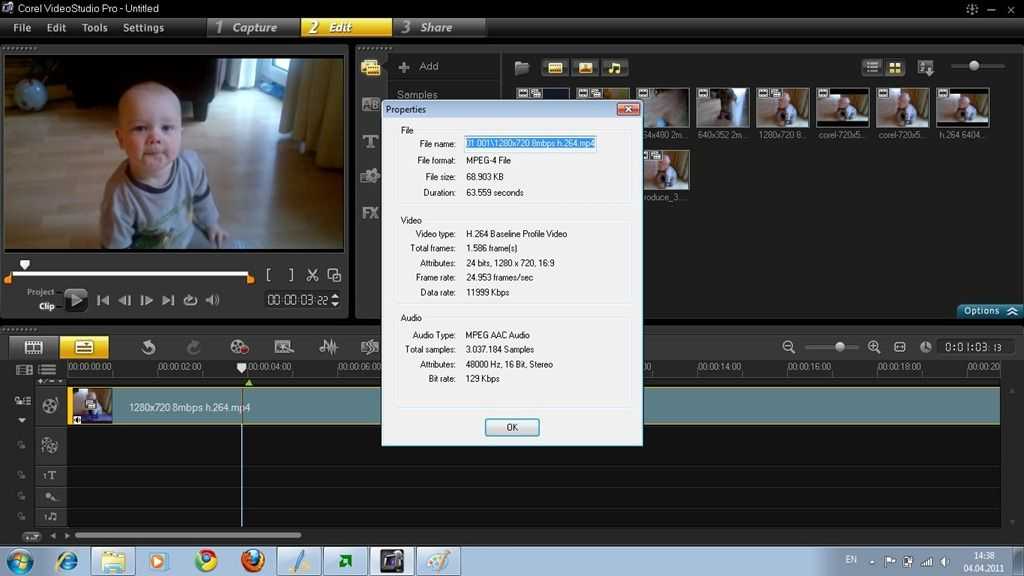
Lenovo S205 – Where’s the AMD APP Love? Updated with AMD, Cyberlink Input
Posted on 05 April 2011
I’ve been working on a big ultra-mobile video editing article since last Wednesday that gives you all you need to know about video editing on the Lenovo S205. Unfortunately, I just re-installed the S205 OS and forgot to backup the directory where the draft article was. I’m hoping to recover the file this afternoon but I can at least tell you one thing The Lenovo S205 (and possibly Acer 522) don’t support the important AMD Video Converter (Avivo) software from AMD because they have special driver builds that do not include this layer. The Avivo software, as far as I understand, is the base software on which video encoding software (as in video converters and video editing software) that are AMD APP-enabled, hook into to get a GPU hardware boost from the E-350 APU for rendering H.264 and MPEG-2.
Update:07 April 2011
I have had a conversaion with an engineer from Cyberlink who confirms that AVIVO-based encoding acceleration is not supported on these [E-Series, We suspect C-series too] AMD Fusion devices. In fact, what’s really happening here is something more important. AMD Fusion [E-series, C-series] does not support video encoding acceleration. The APP (was ATI Stream) feature that is used by the AMD Video converter base software (was AVIVO) is not implemented. Information from Cyberlink…
Fusion APU does not support Accelerated Parallel Processing (aka ATi Stream) for video encoding. The current AMD drivers do not allow HW acceleration to be enabled for video encoding on the Fusion APUs, and this is by AMD design.
I wish AMD, Cyberlink, Corel and the other companies promoting AMD APP would have been kind enough to point this out earlier. Take a look at this marketing brief…I would call it very misleading.
Transcoding is a very time-consuming and computationally intensive process. With the new AMD Fusion UVD 3 (Unified Video Decoder), and AMD Accelerated Parallel Processing (APP) technology, CyberLink PowerDirector the world’s first 64-bit video editing software offers up to 3.7x faster video rendering speed, allowing users to produce professional-looking videos in less time. MediaEspresso, universal media conversion software, now offers ultra-fast transcoding capability via the UVD 3 Decoder, enabling consumers to enjoy up to 2.75x speedup in performance, significantly reducing waiting time while giving users more time to share and enjoy their HD videos. [Ref: Cyberlink Press Release]
That’s a carefully crafted statement right there. PowerDirector does use APP, but only for some effects. You want to speed-up a section of video that has a fireworks effect on it, yes, PD9 will use APP to accelerate it. MediaEspresso doesn’t use APP. Al it uses are 1) The hardware video decoder which, when your output files are small and simple, provides a big boost. When your files are large and complex, 720 H.264 for example, the percentage advantage of the hardware decoder drops to almost zero. 2) It uses some “optimizations to enable Direct Memory Access between the CPU and GPU memory. Using DMA, we are able to save precious CPU cycles when the CPU is accessing the decoded video frames stored in the GPU memory.” Source: Cyberlink
So that clears up the question mark over my test results. Fusion enhanced video software can use 1) UVD, the hardware decoder, to accelerate decoding of source video 2) Some optimisations to speed up memory optimisations 3) Specific effects process written to use the APP API.
So will AMD Video Conversion (Avivo) support come in future driver sets? I also ask myself the question, if you can write code to implement affects enhancements, why can’t you write code to improve the video encoding process? Is this something this might come in the future? These questions remains unanswered for the time being.
End of Update. 07 April 2011
Update: 12 April 2011
It appears that I kicked a little bees-nest with this post as both Cyberlink and AMD have been in touch. The information and contact is much appreciated. Both AMD and Cyberlink wanted to clarify that the video encoding limitations don’t / won’t apply Fusion-wide. i.e. The E-Series APU that we’re testing here is aimed at consumer markets but there will be other products that will widen the use of APP.
The AMD E-Series parts are designed with the latest technology in their class making it a fully capable platform. While entry-level AMD VISION systems are capable of video transcode and editing, they are primarily designed with a focus on content consumption. VISION Premium and VISION Ultimate are the recommended systems for content creation. Upcoming AMD Fusion products designed for these mainstream and enthusiast markets will bring the capabilities of the current AMD Fusion products to new levels and introduce new and exciting levels of APP support.
So. Clearly there will be new products soon. I’ve been pointed to the AMD Fusion Developer Summit in a couple of emails so maybe they (AMD, Cyberlink) will be announcing new products then?
Cyberlink also sent a PDF which highlights the Brazos acceleration in their products. Here’s the diagram that shows the UVD (Decode) and DMA (Memory transfer) accelerations.
I posed a question to Cyberlink – can you do anything else to enhance performance through APP? The answer -They are looking at it and expect to implement for APP use in the future. Cyberlink are at the Fusion Developer Summit and holding a talk on Optimizing Video Editing Software with OpenCL. Details can be found in the event catalogue here.
End of update – April 12th
How stupid is that? AMD will be pleased to hear that that part of their platform is crippled on the Lenovo S205. Especially as they’re promoting it. (See Update above. The limitation was actually designed into Fusion from day 1)
Yes, I’ve tried updating all drivers but I can’t get the video encoding acceleration working at all even with new versions of Catalyst 11.2 or 11.3. I’ve tried 5 different software packages that claim to get a boost from the Fusion GPU but none of them get any speed increase at all. Some of them don’t even see the hardware.
I can get some specific code in one video editing program working (an effects overlay that is written to use AMD’s APP API) but that’s about it.
This is such a shame because the S205, when using Corel VideoStudio Pro X4 is really looking good even without the hardware rendering acceleration. The editing process itself is very smooth. There’s a need for some new profiles to enable my specific usage case and an SSD would improve the lengthy start-up time but I was seeing H.264 being rendered at 5mbps in 720p at about 3.7x real time. (slower than real time.) The rendering speed for 720p h.264 could be brought into the 2x range if Avivo was working and that’s very usable indeed.
My final test before sending the article out was to run the software again after a factory reset on the S205. I didn’t quite back everything up before I did it! I’ll bring you more details soon but right now I’m working on recovering 4-days of work on the article! Update: Looks like I lost it. I’ll put together a new one over the next few days. (See update above)
Many thanks to NotebookItalia.it who I discussed test results and thoughts with during this test. They have an article up showing vido rendering tests on C-50 and E-350 CPUs here. (Translation)
 |
| |||
 |
| |||
 |
| |||
 |
| |||
 |
| |||
 |
| |||
 |
| |||
 |
| |||
 |
| |||
 |
|



